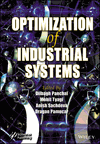CFD Analysis of Car Parking Area to Study Carbon Monoxide Levels
Summary
The objective of the present research work is the measurement of the carbon monoxide levels in car parking. We know that there are primarily two health effects of CO emissions in a car parking garage on the human body. The first effect is breathing problems and another effect is chest pain. The CO produced by the fuel combustion in automobiles is in the form of gasoline smoke and oil fumes. It can cause nausea, headaches, confusion, and chest pain. Also, CO fumes are responsible for potential fire hazards. In order to dilute the effects of CO on human health, we need a proper ventilation of CO. The ventilation can also help in controlling other contaminants such as CO 2 . The objective of the present work is to design a ventilation system in car parking for a CO level of 130 mg/m 3 (120 ppm) for 15-minute exposure, CO level of 74 mg/m 3 (65 ppm) for 30-minute exposure, and a maximum of 40 mg/m 3 (35 ppm) for a 1-hour exposure limit as per the health and safety regulations according to the ASHRAE Handbook. In the present work, first we make a 3D model in the 3D modelling software Salome Mesh. We use governing equations such as mass conservation, momentum conservation, and species conservation, however, we have not used energy conservation. We also used a jet fan because circulation is required for the fresh air in the car parking. The jet fan model is an IV smart EC induction fan. The considered fluid flow is turbulent. In order to account for the effect of turbulence, we used the Reynolds averaged Navier Stokes (RANS) based turbulence model, namely the standard k-epsilon model. All the governing equations are solved using an open-source CFD software OpenFOAM. The software is written in C++ language and provides the facility to modify the simulation code according to the requirement of the client. Contours of carbon monoxide level, velocity vector, velocity contour, pressure distribution, turbulence kinetic energy distribution, and rate of dissipation of turbulent of kinetic energy have been plotted. All the results have been shown from the ground level to the level of human height and jet height in the car parking area. Based on the results obtained, we determined the exact place where the jet fan should be installed for the circulation of the fresh air in the car parking area.



